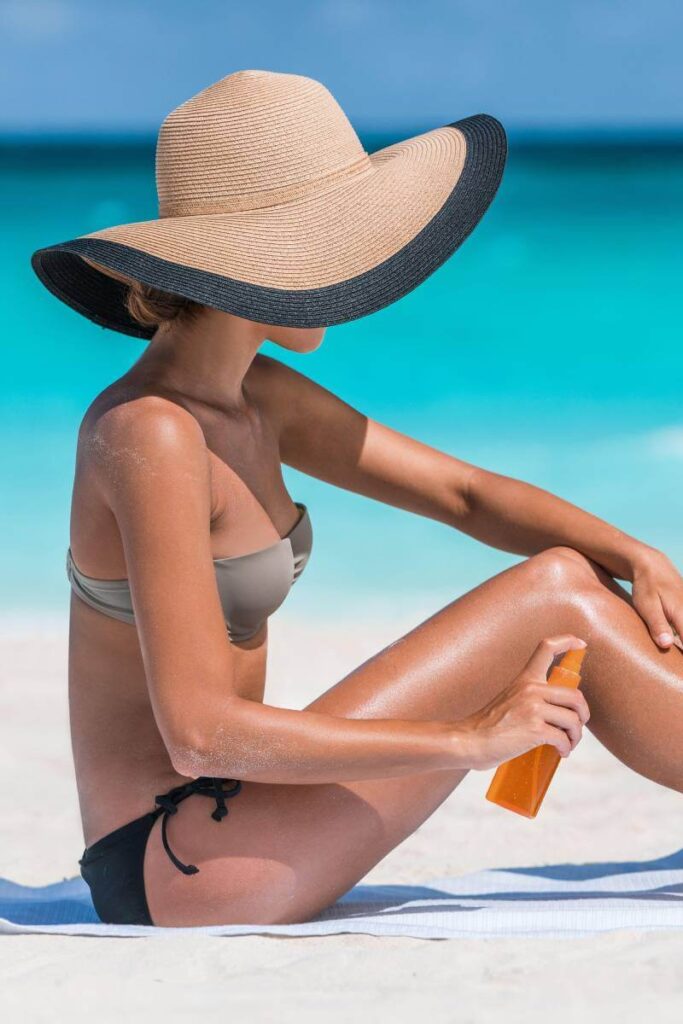Whether you’re a sun worshipper who welcomes every heatwave with open arms, or you prefer to stay in the shade all year round, sometimes it’s hard to to avoid catching the sun.
But a touch of prickly pink skin at the end of the day isn’t really going to make a difference, is it?
Wrong – experts suggest even mild sunburn can put you at risk of skin cancer, and that’s not the only mistake many people make when it comes to sun protection.
Here, experts explain five common misconceptions about sunburn, and what you need to do to stay safe.
1. The odd sunburn doesn’t make a difference

“This is something I hear a lot but unfortunately, it’s just not true,” says Karis Betts, senior health information manager at Cancer Research UK (cancerresearchuk.org).
“Damage to our skin from the sun is the number one cause of melanoma, the most serious type of skin cancer, and skin damage from the sun builds up over time – it doesn’t go away after the burn fades. Every burn counts, but this also means every time you protect yourself also counts.”
This is even more important for children. According to the Skin Cancer Foundation (skincancer.org), “even one blistering sunburn in childhood or adolescence more than doubles your chances of developing melanoma later in life”.
Read: Natural sunburn remedies
2. You have to go red before you go brown

Want to get a gorgeous, golden brown tan this summer? Your skin doesn’t need to turn red first.
“This is one of the biggest myths in sun protection, and it contributes to skin damage and skin cancer cases,” says Abi Cleeve, managing director of Ultrasun UK (ultrasun.co.uk).
“The fact is that as soon as the skin reddens, it’s in trauma. A ‘trauma tan’ occurs from inadequate protection where the skin appears to tan more quickly, but hasn’t – it has burned. This only ensures that the skin peels, leaving the skin tan-less in days.”
To tan safely, Ms Cleeve recommends gradually building up your time in the sun, and using higher SPF sunblock. “Use high UVA and UVB filter SPF – a minimum of SPF30 with a UVA filter of more than 90 per cent will protect the skin and still tan, just more slowly [and] minimising long-term damage and peeling,” she suggests.
3. A tan will protect you from sunburn
Even once you’ve started to tan, your skin is still at risk.
Ms Betts says: “People with naturally darker skin tones have a lower risk of skin cancer than people with lighter skin tones [although everyone is at risk], but going out and getting a base tan before your holiday doesn’t provide the extra protection you might think.”
In terms of sunscreen, she recommends: “At least SPF15 with a UVA filter of more than 90 per cent. Make sure to reapply it regularly and generously, especially after swimming, sweating or towelling.”
Read: What is the UV index? An expert explains what it means
4. All body parts are created equal when it comes to sunscreen

“Burning – overexposure to UVB rays – tends to happen where the skin is closer to the bone structure, and especially where the part of the body faces directly the sun’s rays,” says Ms Cleeve. That’s why you often see pink patches in the same places after a day in the sun.
“Tops of feet, shoulders, décolleté, top of the scalp and the nose – take extra care in these areas,” she advises. “Other common sites include the scalp or parting, sides of the face and ears, areas around swimwear such as straps, and shorts that might move or rise up through the day.”
Ms Cleeves top tip for all-over protection? “Do your sun cream naked! Then any movement in straps, shorts won’t suddenly bare unprotected skin to the sun’s rays.”
Read: Don’t make these sunscreen mistakes
5. You can’t get burnt in the shade
Effective shade can provide protection from the sun’s UV rays, but we can still get burnt in the shade.
Shade materials with holes or gaps can allow penetration by UV radiation. The same rule applies for tree shade, with denser foliage and wider canopies providing better protection than trees with sparse foliage and dappled sunlight.
Reflected UV radiation is another factor that means you’re not always safe in the shade. The sun’s rays reflect from light-coloured surfaces and can bounce back under shade.
Light surfaces, such as concrete, light-coloured paint or metallic surfaces, reflect more than dark ones. Sand can reflect as much as 25 per cent of UV radiation. This means if you’re sitting under a beach umbrella, UV radiation can still damage your skin, even though you feel like you’re covered in the shade.
Are there any other sunburn myths you wish everyone knew? How do you stay safe in the sun? Let us know in the comments section below.
– With PA

